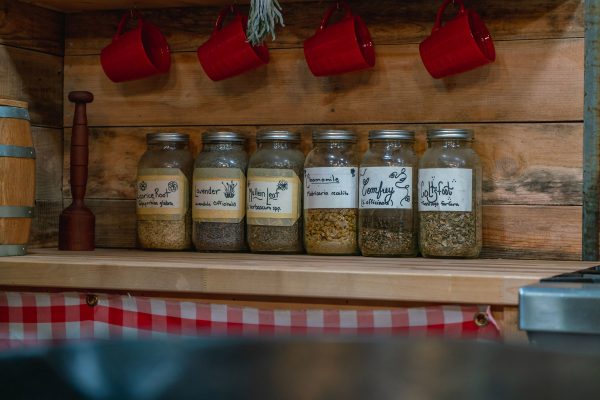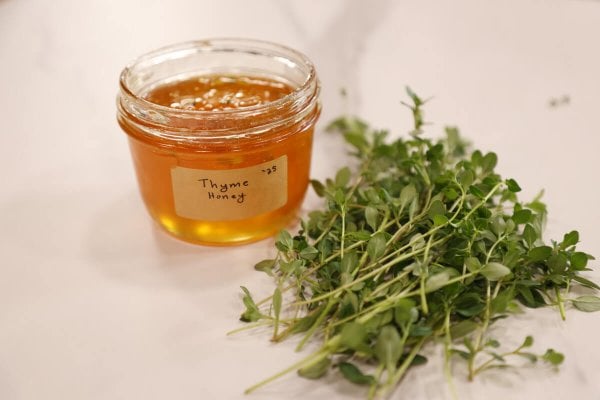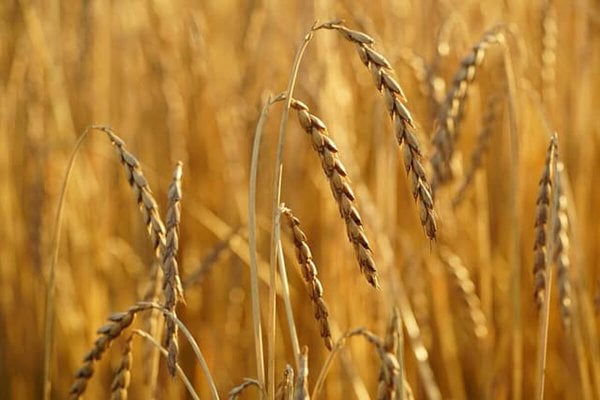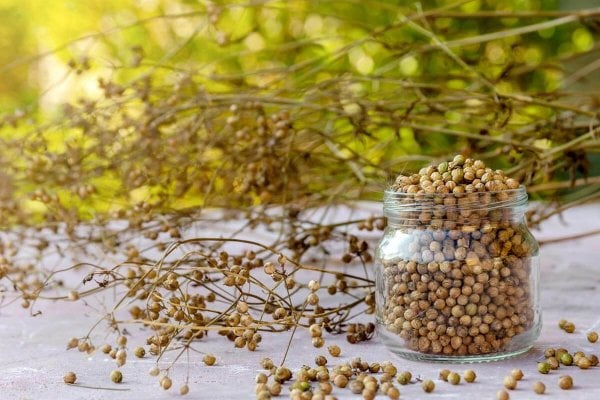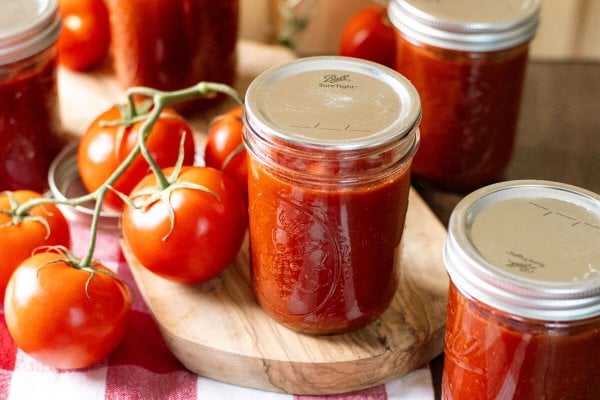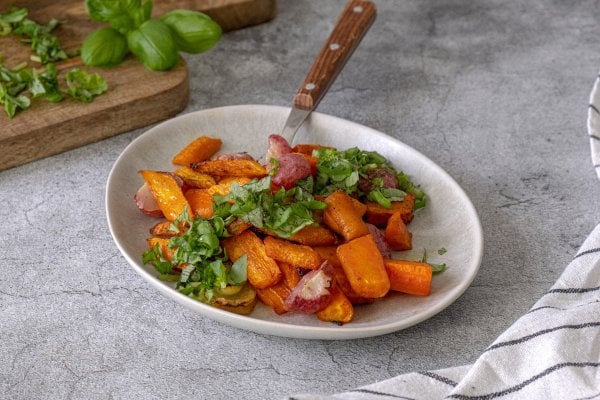Whether you have 40 acres or a 1/4 acre suburban lot, there are always projects on the to-do list and it isn’t always easy to get them all done in a timely manner. So how do we prioritize what comes first on the list in order to get them all done?

We published this post just a couple of weeks ago but also realized there’s a lot more that goes into prioritizing our time, our relationships, and the homestead projects that we wanted to share. We want to be sure we address these things to give the whole picture of how we prioritize this in our own lives.
A reader of ours, Laura Ayars, recently wrote in a question on how to get it all done! Here’s exactly what she said:
“How do you make your priorities about what you will do, Carolyn? If there’s anything I find frustrating about homesteading is that it’s all interesting and all worthwhile, but there are only so many hours in a day and only so many available brain cells. I want to do everything! Spin wool, make soap, grow herbs and make homemade teas, can all the things, ferment all the things, freeze all the things, quilt a quilt for all the kids, make baby clothes, use cloth diapers, knit mittens and socks, I get out of breath just thinking about it all! How do you wade through what you think is really important?”
Truthfully, I think we all feel that way. Our list of the projects we want to accomplish is a mile long, but the list of projects we actually have the capacity to do is a fraction of that.
So how do we stay organized on the homestead and prioritize the things that are truly important to get them done on a daily, weekly, or monthly basis? Take time to reflect, plan and implement goals.
Before we dive into homestead projects, whether it’s in the kitchen, in the garden, or in the barn with the animals, we have to take inventory of a few key things first.
Watch the video below where Josh shares these key five steps we evaluate first, then continue reading to see how we prioritize the projects one by one…
Prioritize People First
Those that are around you and even caring for yourself come first.
You have to prioritize your own health, whether mental, spiritual, or physical. If you’re married, you have to prioritize your spouse’s health. And if you have children, you have to prioritize their health.
If we start pushing people over in order to “get things done,” there can be major breakdowns. Emotional breakdowns, relational breakdowns, or even physical breakdowns.
If you’re having people problems, everything else needs to become secondary and you need to hit pause to get those relationships mended. We encourage you to take regular vacations from the homestead.
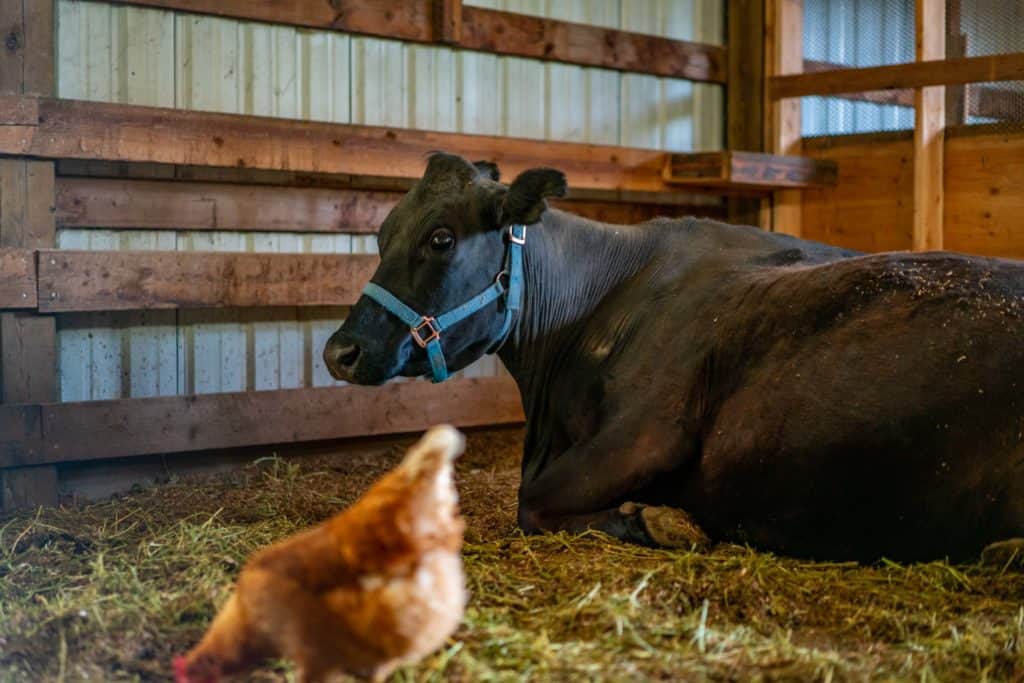
Animals Second
Our animals are next on the list of priorities. They come before the garden and land. We have to make sure they have adequate food, proper housing, and protection from the elements.
Farm animals are 100% dependent on humans, so if there are issues with the animals, those issues need to get solved before moving on to the next priority.

Tools & Equipment
On the homestead, we’re grabbing a tool every single day. From a chainsaw or garden tool to a tractor or side by side.
Our tools are like a relationship, we have to put something into them (whether it’s caring for them, storing them properly, or mending those that are broken) in order to get out of them what we need. When we need a tool to do a job, it’s important that it’s in good working order.
If you need to purchase or replace any tools, here is our gardening resources guide, with our top product recommendations to help you find high quality tools and supplies.
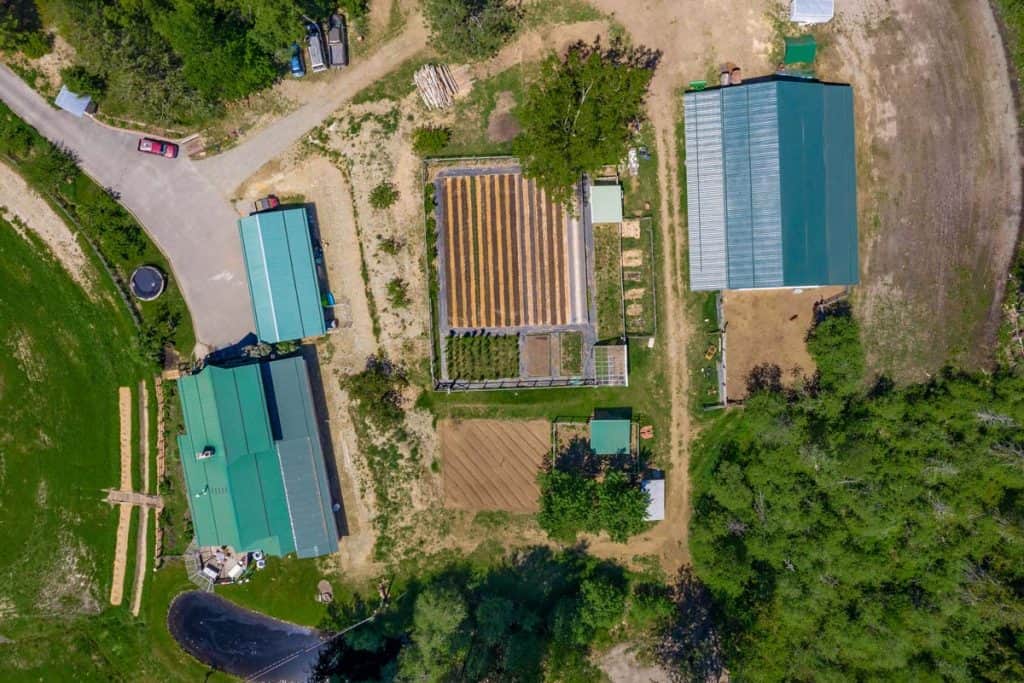
Land Management
I might put land management above tools and equipment, but it’s probably closer to a tie. We have to tend to our land and our soil, managing them well if we want them to produce for us.
Be specific about how you’re going to take care of your land, whether it’s building a compost pile, not over-grazing your pastures, or maintaining roadways.
The more you build this into your priorities, the fewer issues you’ll have pop up. When land issues come up, they can tend to be emergency-type situations that take all your focus and time until remedied.
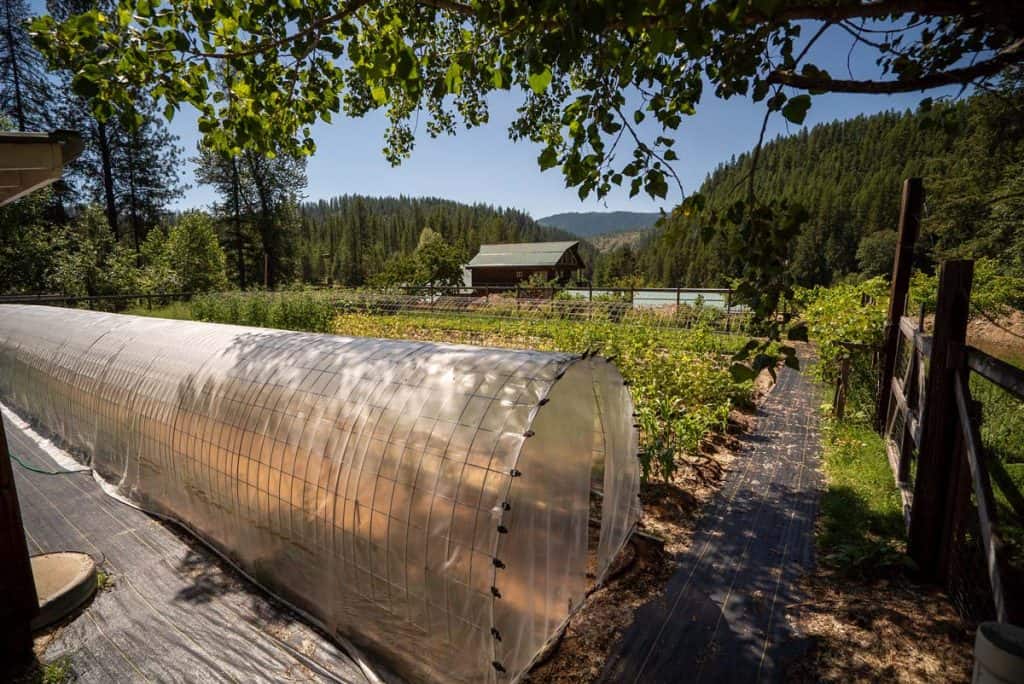
Garden
We’d love to move the garden to the top of the priority list. We love gardening, but when it comes to overall strategy and management, the garden is the easiest to replace if it has to fall to the bottom of the priority list.
We can go to the grocery store if we have to hit pause on the garden for a season, but we can’t buy new relationships. No one wants to get to that place where you’re feeling so overwhelmed because you’re trying to get everything done.
There are enough things that are going on that are out of our control, so do your part to care for your relationships, your animals, your land, tools and equipment, and growing a bountiful garden.
Even if you are behind on garden planning or didn’t do any garden cleanup last fall, it’s rarely too late to do anything in the garden. Here are our best late start gardening tips to help.
4 Steps to Prioritize Homestead Projects
For us, here on Riverbend, how we prioritize our homestead projects all boils down to four things:
- Needs
- Wants
- Resources
- Return
We first make a list of all the projects, all the tasks, and everything that needs to get done or that we want to get done around the homestead.
From there we divide the list into two categories, Needs and Wants.
Once we have the list divided, we then take a look at what our resources are, and what the return on that task or item will be. Our resources are time, money, and natural abilities. The return is whether the task or project is worthwhile and productive.
After that, we look at some of the items we can easily outsource or eliminate completely. And with what’s left we prioritize them in order of importance.
For example, if we want to build a barn, but we don’t have the money to do so, it’s probably not a project that should be at the top of the list.
Furthermore, if we do have the money, but lack the ability to build a barn, this would likely become a project we would outsource.
Likewise, if we want to learn to knit clothing for our family, but our children already have all the clothes they need, then the return on the time spent with this project isn’t really there.
For us, simply because we’re always feeding 12 people, but more often feeding upwards of 18 people, food is a very central need in our family so it takes up a large portion of our focus. Building up our long-term food supply, buying in bulk, growing a large garden, and then preserving our food (including buying preservation tools that make our job easier and faster) take the forefront of many of our projects.

Observe, Plan, Act
Once we pinpoint the items on the list that take priority, that task becomes a constant cycle of observing, planning, and acting.
By observing what’s going on, you can create a plan of attack. This plan is a guide to producing action. Once the action has taken place you begin the observation phase again to make sure your plan worked or whether it needs adjusting.
If it worked, you adopt this principle with the next item on your priority list. If it didn’t work, you go back to the observation phase to see what needs adjusting, make your plan, and then take action.
We’re always learning or needing to improve, so this cycle of observing, planning, and acting are on constant rotation here on Riverbend.
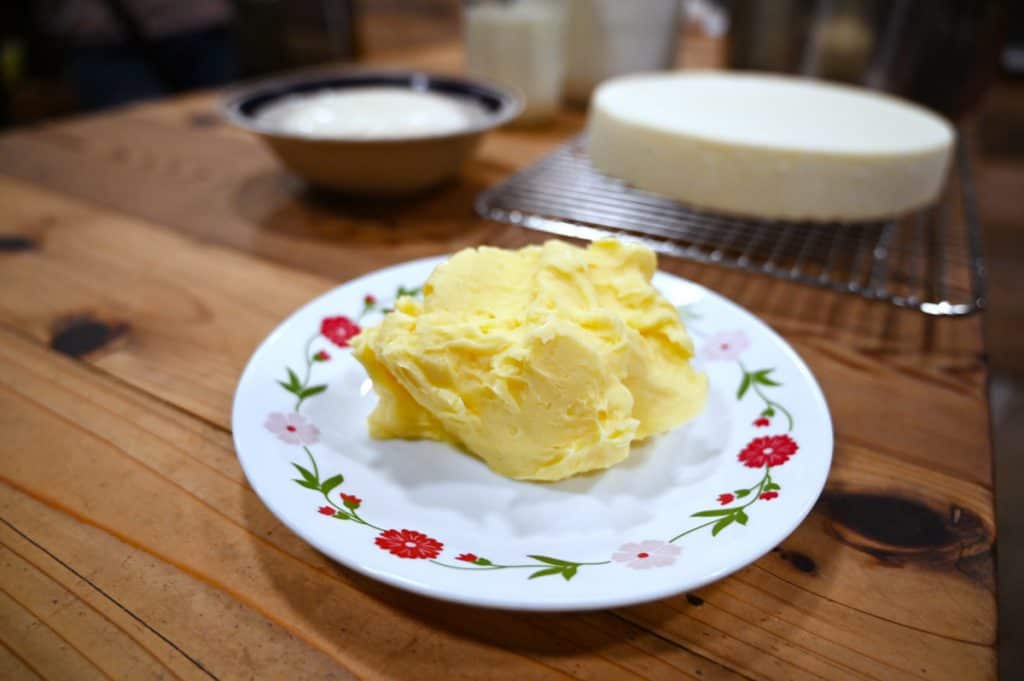
Urgency vs. Desire
With the time that we live in, a lot of us are feeling the pressure to learn more skills to be more self-sufficient. Yes, the grocery store is currently available to us for buying food, but what if it wasn’t? Knowing how to garden and grow your own food, or raise your own animals is an important skill to learn now, before you need it!
For us, some of the things we’ve learned over the years weren’t out of necessity, but out of the desire to be prepared and to learn skills.
For example, we learned how to make soap a number of years ago. We practiced for a good long while until we perfected it and got it down to where it doesn’t take very long. Now, we get to decide whether we want to make it or not. We still do, but it’s a choice we make, not something we have to do out of necessity.
If the time came when other tasks were more pressing, we could set that skill aside for a while and pick it back up when needed. For now, we’ll continue to make it!
There are other skills such as making homemade butter that are important. We think knowing how to make butter by hand (without any special tools) is important. So we learned how to make butter the old-fashioned way.
Once we perfected this skill, we purchased an electric butter churn that now makes large quantities of butter at a time. That skill was learned and perfected, then we figured out how to make it better for the long term.
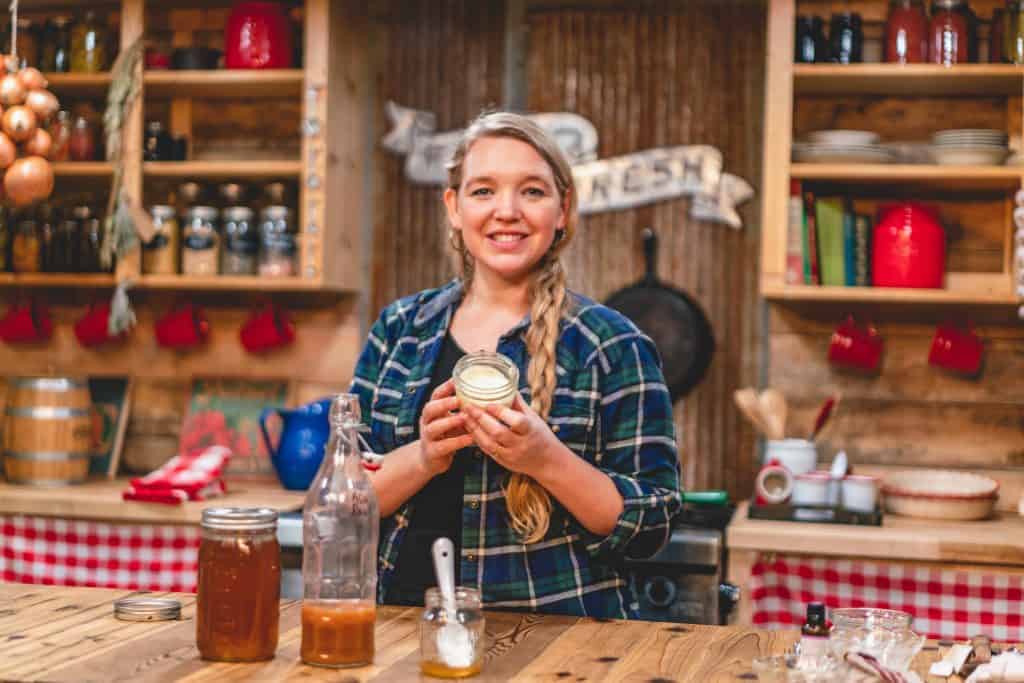
Don’t Forsake Your Passions
In everything that’s on your priority list, be sure to save time for those projects that spark joy! You need to feed your passions or else everything you end up doing will become monotonous.
In everything, be sure you layer in projects that spark joy in your life. Homesteading is hard, so it’s very important to enjoy moments in the “hard”.
When we prioritize our time correctly, we’ll find that we have the time for everything needed.
God first, people second, all the rest of it can fall right behind!
More Posts You May Enjoy
If you find tips like these to be helpful, take a look at our Household Management Class, where we cover a lot of the tips and tricks we use on a daily basis to keep our household running smoothly! It’s the perfect series to accompany this post on how to prioritize homestead projects.
Also, if you’re someone who is looking for more recipes and tips for using the harvest, be sure to sign up for the Homestead Kitchen magazine!
- Making Your Garden Work For You
- My Secret to Running a Productive Household
- Financial Resiliency on the Homestead
- The Basics of Sewing with Bernadette Banner
- Meal Planning on the Homestead (Eating Seasonally)
- Yearly Planning on the Homestead
- Affordable Clothing for the Homestead
Josh: Hey, you guys, this is Josh.
Carolyn: And Carolyn.
Josh: With Homesteading Family. And welcome to this week's episode of the Pantry Chat, Food For Thought.
Carolyn: This week, we're discussing how to prioritize your homestead projects and kind of you want list of projects too. Right?
Josh: Oh, man. And you guys all know, when you've got a homestead going, whether it's 40 acres or whether it's a quarter acre, or a suburban lot, and you're trying to do all these things, there's a lot to choose from, there's a lot to get done. And it is a challenge and we definitely need a way to think about what do we do, what do we put off to later, what do we not do, all of that.
Carolyn: Well, and I know a lot of you guys are just like us, you love getting to learn, you love getting to do different projects, and learning these different skills. But how do you choose which one to tackle first?
Josh: That's right. You're just going to do it all, right?
Carolyn: We don't need to sleep. Sleep's for sissies.
Josh: That's right. As I nod off while we're talking today.
Carolyn: Okay.
Josh: But in the meantime, we're going to catch up a little bit with a little chit chat and answer actually a couple of your questions today, because hey, it's been a little bit, hasn't it?
Carolyn: Yeah. You're here. We're sitting together.
Josh: I know. Isn't that great. It is nice to be home.
Carolyn: In the pantry. I started thinking, "Gosh," people are probably wondering if we're having marital problems."
Josh: What's going on?
Carolyn: And we're living in different places or just, no, he still lives here.
Josh: Thank goodness.
Carolyn: But you've been busy and doing all sorts of things. So what have you been up to?
Josh: Yeah, well really exciting stuff. And I think some of this is probably obvious. We've been talking about something big, and new, and exciting, coming. And we are building an online homestead school, right? A school where we're bringing many instructors to you, not just Carolyn and I, that is really going to change and shape how you learn, and I think accelerate the learning journey.
Carolyn: Yeah. This is really exciting. So this, we've been kind of tiptoeing around this, but this is a major project for us. And we are so excited because you guys know our story a little bit in that when we started homestead, we're not coming from generations of homesteaders.
Josh: No.
Carolyn: We are pioneering this information for ourselves.
Josh: Well in an area of Southern California, while we were rural and in the mountains where there was no knowledge, there was no old timers, no anybody to draw from. And really there was barely any YouTube, if any, at all back then-
Carolyn: Right.
Josh: ... when we started.
Carolyn: Way back then.
Josh: It was books, what you could find. And trial and error.
Carolyn: Yeah. And you'd ask everybody you ran into, but most people didn't know.
Josh: Yeah.
Carolyn: Occasionally, you got kind of the jewel conversation that gave you some insight. But I know from talking to a lot of you guys, a lot of you have had the same struggles. The information is surprisingly scarce, about some of these things that we really need to learn. We really need to regain these skills before the knowledge, the old knowledge is lost. And so we just have a passion to bring this information to you guys in a way that makes your life easy.
Josh: Well, and-
Carolyn: We're not having to scramble.
Josh: ... it accelerates the journey. And only, I mean, we're a couple of creators here, right? And you guys watch other creators and we're all out here. We all have our things that we can teach on, none of us can cover it all. None of us can just consolidate all that information. But all of us together, as creators, as the people that are trying to help you guys out, can come together. And so we are creating a place where creators are going to come together for specific schools, skills. This is an educational experience. And where it's going to streamline the learning process.
And you can still go to YouTube and you can still watch Homesteading Family and whoever it is that you love to follow, but you're going to come here to see all those people in one place really honed in on the skills. That's what's really exciting. And so that is just, we think, that's going to be a game changer to the educational journey to help people live the lives you're living, because we've all got to live our regular lives that we're trying to build these skills, and this is going to accelerate that learning process a lot as it comes out. So we're very, very excited. It's called the School of Traditional Skills. More information will be coming.
Carolyn: Yeah. We'll-
Josh: But-
Carolyn: ... keep sharing it with you guys, but we can say it's coming out this summer. Right?
Josh: It is coming out this summer. Yeah. So it's not that far away now and we're not ready to release dates yet. We're getting all that dialed in, but it is coming really soon. And so I've been out filming. I've been out directing and producing these classes with different folks. You saw I was with Anne of All Trades.
Carolyn: Yep.
Josh: And we did a class here. Carolyn's got a class for you. Melissa Kay Norris has got a class for you. And-
Carolyn: Lisa Bass.
Josh: ... Lisa Bass, Farmhouse on Boom. Those are some of the ones we've done. There are more coming. We're going to hold on to that for right now. But-
Carolyn: Let me just say, we have dug in to find the people who have the deep knowledge on a topic, and who are ready to share it with you. And so the names are exciting. The people are exciting, because of their knowledge and how they can share that, and get it to you in the easiest possible way. And so it's exciting.
Josh: Yeah. It's very exciting. And so it's going to come out this summer, but it's not going to just be a one time release either.
Carolyn: No.
Josh: It's going to build day after day, month after month, year after year, into a school, an online school. So very, very exciting. And I'm going to continue to be in and out because we're filming all summer long. I'm literally all over the country. Hopefully, we'll be continuing to bring some of those folks onto the Pantry Chat when I'm out.
Carolyn: Yeah.
Josh: And yeah. Just really, really cool. So that's a lot of my life right now, while trying to jump in at home and deal with spring. And we just got some of the first things out in the garden, and we've got starts indoors, and we've got new lambs. And we just looked at the calendar and said, "Oh my, the cow's supposed to calf here within a week."
Carolyn: Right. That was actually a shock to us. In my mind, I had the end of May. Not now.
Josh: And I did too. And so as we were planning, prioritizing, thinking about, we do a chore adjustment within the whole household every year, and we're looking at that and okay, somebody's got a milk. I'm like, "Oh wow, this is coming up fast all of a sudden."
Carolyn: Right.
Josh: So life on the homestead is still happening. It hasn't stopped. Thankfully, the kids are older and so we're at a good place to do this.
Carolyn: Yeah.
Josh: And so, yeah. Really, it's just a lot of exciting stuff. But I may need something to prop my eyelids open as there's a lot of travel involved.
Carolyn: And that's exhausting.
Josh: And life on the homestead goes on. So-
Carolyn: Good.
Josh: ... lots of good coffee.
Carolyn: We will keep you guys updated on that.
Josh: Yep.
Carolyn: So keep watching.
Josh: So what about you? What are you up to? You're just putting your feet up, kicking back while I'm gone. Right?
Carolyn: Well, you're not home, so we're just ordering delivery pizza and watching movies all the time.
Josh: Right.
Carolyn: When the cat's away the mice will play.
Josh: That's right. Yeah. See how you are.
Carolyn: Yeah. Right. Okay. So, oh, hey, before I go any further, here's what I've been up to. The latest issue of in the Homestead Kitchen magazine just arrives. So I'm really excited.
Josh: Right.
Carolyn: Again, you guys can get your subscription to the magazine. But I got to tell you, this one that I'm holding in my hands right now is the only physical copy in existence. You will not get a physical copy. It is a digital magazine. But every month it's based around a different food that you can produce on the homestead. This month is all about milk. And this is where I share a lot of my recipes, a lot of the information that I have learned, and it is amazing. And you're going to want to try out these recipes.
So make sure, I'll put the link in the description, you jump over. Oh, here's the last one. This one's good, too. This was on spring greens. This was last month's. So make sure you jump over and check that out. Grab your subscription to that, so that you are getting all the latest information. I know you guys are always asking for more recipes from me. This is the place I'm sharing more recipes.
Josh: Right.
Carolyn: So make sure you jump over there. So I've been working on that and that's always fun. But around here it is officially spring. We can say that.
Josh: Finally. I know a lot of you have been well into spring for a long time.
Carolyn: Oh, I know.
Josh: We're north Idaho. And north Idaho is even slow this year.
Carolyn: Yeah.
Josh: For us.
Carolyn: So yeah. We are way behind this year. Excuse me. And it's finally spring. It's finally here. So we've been planting. We planted out a whole bunch of seeds. Onion sets are about to go in. I planted, I think it ended up being 18 row feet of our greens in our succession bed. We kicked it off with a big bed to start. And it's all under hoops to kind of gain us a little solar gain here, and heat it up a little bit more. So we've just been kind of doing that, the season transition, which it's always a little tricky to navigate because you're not quite in warm yet, but you're not quite, you're still a little bit in cold, but you're planting, but you're still doing school.
There's a lot of these kind of tensions that creep up this time of year where it's like trying to balance it all and transition smoothly. But you know it's coming. If it's spring and it's getting warm, that thing is coming. This is the only thing that I tend to share with you guys that's coming up. Here's the task that I'm about to do, because I need a lot of moral support for this one. And that is the semi-annual clothing switch.
Josh: Oh, I was even trying to go, okay, where are you going with this?
Carolyn: What is this?
Josh: That's right.
Carolyn: No, we are here. The kids are starting to say they're hot in their winter clothing or they've grown out of stuff. I think just about every pair of jeans, the kids own, that's not church jeans or town jeans are holy at this point. So it's time, officially. And I can't put it off any longer. So I'm going to be doing the clothing switch. I thought I had a date on the calendar and then a homeschool event interrupted that. So I have to change it around a little bit.
But these are getting easier every year with the kids being older. So the majority of the kids being older. But there you go.
Josh: Good to know.
Carolyn: If you're brand new to following the Pantry Chat, you'll know that this is a challenging time of a year or I'll let you know, it's a challenging time of year where I take all of the kid's clothes. There's 10 kids. And we have all the bins of hand-me-downs or non being currently used clothes up in the attic. We have to bring all the bins down, go through everybody's clothes and get them all re outfitted for the summer season.
Josh: Yeah. Figure out what can get passed along, what gets thrown away or put to rags or whatever. And what do you need to buy new?
Carolyn: Absolutely.
Josh: Yep.
Carolyn: So that is coming.
Josh: Hey, I wanted to share just thinking about spring and gardens, because we're doing a few things new. We're doing a few experiments this year. I mean the hoop houses a little bit on the terraces, those aren't really-
Carolyn: Right.
Josh: ... experiments. But we have a few other things new. One, is we have these terraces that extend Carolyn's kitchen garden, and we're actually bringing some of the main crop down that really isn't main crop like leafy greens-
Carolyn: Right.
Josh: ... and chards, and things that we access a little more often, getting those closer on the terraces. But with all the things in the world and all the supply issues and the different things, we're thinking long term about food production past the systems we have.
Carolyn: Right.
Josh: And Caroline came up with the idea, because we have these terraces, we can't quite fill them up yet. Some of them are going to get filled with perennials eventually, let's experiment with some wheat.
Carolyn: Yes.
Josh: And do just a test patch. So we're doing a test patch of spring wheat, I think.
Carolyn: Spring wheat.
Josh: What that was-
Carolyn: Yes.
Josh: ... that we just planted this morning. So that's a fun experiment.
Carolyn: Yeah.
Josh: Just a small space to see how it goes, with the thoughts of maybe one day... Because that's one thing that we don't raise. We buy all our grains in.
Carolyn: Right.
Josh: And it would be nice to list, just see, can we move towards that a little bit eventually? So that's a fun experiment.
Carolyn: Another experiment that we're doing this year centers around producing oil for the household.
Josh: Oh, that's right.
Carolyn: Yeah.
Josh: I forgot about this.
Carolyn: I am doing an entire large terrace row of oil seed sunflowers.
Josh: 400 feet.
Carolyn: 400 feet.
Josh: That's about 400 feet long. Yeah.
Carolyn: Yeah. Of oil seed sunflowers. And I have just gotten myself an oil press. I've been eyeballing them for a while. What do I want to do? And went ahead and just got that coming, because oil is one of those things, that it's great, we've got lard and butter for cooking, that works out really well. But I really don't want melted lard on my salad for a dressing. I just don't.
Josh: No thanks.
Carolyn: So if you're buying sunflower seed from the grocery store, it's not very healthy. The reasoning behind that has a lot to do with the fact that it's probably gone rancid really quickly. And so they deodorize it, they bleach it. They do all these things so that you can't tell that it's rancid or to make it last a long time.
Josh: Did you say deodorant on your sunflower?
Carolyn: Deodorize. Yes. Because rancid oil stinks. And so you don't want to know that you're eating rancid oil. You'd never buy the thing again. Anyways. Fresh oil, sunflower oil is healthy. It is good for you. So that's a good thing to have on hand. And the great thing is, is when you harvest the sunflowers, the seeds store for a long time. You could store those in whole form. And so then you can do small batches of your sunflower oil whenever you need it right through the winter.
Josh: Love it. So we have the potential between butter, lard from the pigs, and we're raising cooney's now that are more of a lard pig. And then sunflower oils, you start to have all your cooking fats and your culinary fats covered.
Carolyn: Yeah. You really do.
Josh: I mean, ideally, we could potentially, in a few years, have all of our cooking fats covered on site.
Carolyn: Well, and if it's-
Josh: That's pretty cool.
Carolyn: It is cool. And it's important to notice if you're ever facing food shortages that those are some of the things, your meats, your proteins, and your fats are some of the first things to get scarce. And they're some of the things that you need the most. You can go forage for greens. It's a lot harder to forage for fat.
Josh: Hey, I'm going to try not to go on a rant here.
Carolyn: Okay.
Josh: But I want to just dig deeper into something we're touching on here for everybody. Because we focus on solutions. We're often talking about the solutions. Sunflower seed oil is a solution. Both is something we want to do, and to things happening in the world around us. The wheat is a solution. And of course our whole lives that we're living are often, and you guys, a solution to things that we're seeing, and things that we want different in our life. And while we're not focusing on the problems, there's a lot of things happening. And the scarcity and the potential continued scarcity is real.
The inflation is real. And I don't believe that this is transitory. It's going to peak. It's going to drop. But I think it's going up. And so these challenges are not going away and we say this from time to time. And so I just want to remind you guys right now to stay motivated, to be continuing, whatever you can do within your sphere of influence, your property, whatever scale you're at, keep learning, keep growing, keep doing things. This is going to become more and more important. COVID wasn't a blip. It was the start to something else.
And it's just never been more important. And so when you see these things, we're often approaching it from the solution side of things. But the need is real. The concerns are real. And it's why we're doing what we're doing. It's why we're doing school traditional skills, because we believe that this is needed more and more. And so we just want to encourage you guys to keep thinking about stocking up, to be building skills, to be developing resiliency, if you will, in every area that you can, within your sphere of influence of your life and your community.
Carolyn: There you go. I think that's great. And stocking up and being prepared is not hoarding.
Josh: Absolutely not.
Carolyn: Let's just call out the difference here, because there are people who say, if you buy two or three things at the grocery store, duplicates, that you're hoarding. And that is an absolute misnomer. That is a completely wrongly use of the word. If you are preparing to feed your family, you're not hoarding. You are actually stocking up on something that you are going to use ,and you're going to take care of people with it. This was the normal way of life a hundred years ago. When your garden's ripe, you actually preserve it all, and you get it all in your shelf. And that means you have a year's worth of food on your shelf at one given point. That is not hoarding. That is taking care of your family.
Hoarding is when you are one person and you go out and you buy all that there is, that you can never possibly use in order to deplete the supply. That's not what we're doing by putting food on our shelf.
Josh: Or profit off of it.
Carolyn: Or profit off it. Right.
Josh: And there is some wisdom to building up supplies for trade and for community resiliency in the future. But that's not hoarding either, that's thinking ahead. And gosh, I had a thought, there was one other thing I wanted to say. Oh, it's also fighting inflation. Right now, 50 pound bags of wheat or canned goods, are more valuable in your house than they are in your bank account. Your savings account isn't making anything. And the price of everything is going up. So your dollar is better preserved, at least starting with creating a savings account in your house, with these goods that you're going to use.
And of course, then eventually, animals. And Justin and I were talking about this. And we want male animals. Those are reproducing assets. That is growing value. And that's another step later on. But you want to be thinking about these things, because the money in your bank is getting eaten away.
Carolyn: Absolutely.
Josh: And it's going to continue to. Yep.
Carolyn: This might be its very own Pantry Chat coming up here, a topic, because I think-
Josh: It probably should be.
Carolyn: ... it's a good one to discuss.
Josh: Yeah.
Carolyn: But I do want to move on to the questions of the day.
Josh: Yep.
Carolyn: There's two of them today, because we haven't been sitting here doing this.
Josh: Cool.
Carolyn: So I wanted to do a few of them.
Josh: Right on.
Carolyn: So let me ask you one.
Josh: Okay.
Carolyn: This one's from Mons Urban Patch on Simple Methods to Dramatically Increase Your Harvest video. "The mulch is the part I have issues with. When do I add mulch if I'm sewing seeds. I don't want to add the mulch and suppress the seeds from popping up."
Josh: Absolutely you don't. And it's a good discussion. And we always need to be talking about these things. And a lot of times people just say mulch. And that's the blanket answer, pun intended. And I've probably even communicated that way. But the reality is, is you do have to strategize. And so you have a lot of seeds. You have lettuce seeds, you've carrot seeds, spinach, a lot of your leafy greens, some of your root crops with smaller seeds, aren't going to push up through the mulch very well.
And so I've actually gone to not even mulching those beds, one because in our Northern environment and especially in this location, our other location, wasn't so bad, but here it's cooler and we have a hard time getting the soil to warm up. And so I've gone to just mulching the pathways in most areas. And then, in those beds particularly, I'm planting very densely. So what happens is like if it's carrots, I'm planting four or five rows of carrots, so they grow up and there's a living mulch. They're covering the ground, they're shading it. And that suppresses weeds and holds in moisture.
So yes, you're right. You don't want to mulch in certain things. Now, depending on your environment, other things like corn pops up through a couple inches of mulch, no problem. So do beans. So do a lot of your squashes, those will all come up through a mulch bed. So if you want to mulch those beds and seed into them, you might, where you seed, leave it a little bit lighter and leave it thicker, make a row. But most of those things will come up just fine through the mulch. If it's not too large, and you shouldn't be mulching your garden with big, large chips anyways. It should be straw or wood shavings that are small or not the bigger wood chips. Those are just going to make it hard to work in your garden and impede things. Save those for your walkways.
So that's one part of it. The other part is, if you're not planting as densely as say we do, where we're really maximizing use, maybe you're in a dryer area and you're doing larger spacing, then yeah, you're going to need to either pull the mulch aside, as another strategy and create a furrow. And if you're going to plant your carrots, say a foot apart, you can, and I'm just using those as a good example, because they're ones that are highly sensitive to having to push through things, create a little furrow in your beds and plant in there, leave the mulch piled on the sides. And then as they grow up, you can push the mulch back around them a little bit. That is another strategy that you can do to work with the mulch.
For those of us that are growing for production, I've just learned studying John Martin Fortier and some of the market gardeners, really we just plant densely and let the plant be the mulch. It gets up fast enough and it covers the soil. And so it's a living ground cover in essence.
Carolyn: Right.
Josh: And then if you want to cover it in the off season, great. Pathways are the mulch in our garden. It's lively. So the pathways are always going down. So you could mulch after the season, leave it covered. When you go to plant, just move that mulch over into your walkways and keep going. So you have to be dynamic.
Carolyn: Yeah.
Josh: Right. You have to think about each scenario, and how to work with that system. And hopefully that gives you a few ideas.
Carolyn: Good. Great.
Josh: Okay. All right. For you, we've got Love. Love on what I do with too much raw milk. "Can I dry can the freeze dried milk? I bought bulk freeze dried whole milk. They only put it in a big plastic bag in a cardboard box. $200 of milk. I want to do something safer with it before it spoils."
Carolyn: Okay. Good question. So dry canning is actually just a form of vacuum sealing. And this is important to note, because what you're doing is you are putting something that's already shelf stable into a jar, putting that jar into the oven to heat the entire thing up. And then when it comes out, you're capping it down and letting it down to create that suction as it cools down. So essentially, what you're doing is vacuum sealing. If you're dry canning something like grains, and there might be an insect issue in there, grains are kind of known, they can have a little bit insect thing.
Josh: Especially in more humid environments. Yeah.
Carolyn: They can have the eggs in there. You're also killing those off by heating it first. So that can be a good thing. For the milk, yes, you can absolutely do that. It will extend your shelf life of your milk. You can also just package ours really full and just vacuum seal them, if you have a vacuum sealer. That works out really well too. But you do have to remember that there's a reason why most dry milk is non-fat milk, and that's because your fat goes rancid even when properly stored. Right?
The only thing that's going to slow that down is the freezer. So to really get the greatest extension on this, you would vacuum seal it and then stick it in your freezer, to be honest.
Josh: Okay.
Carolyn: Yes, you can get longer on the shelf with just dry canning it or vacuum sealing it. That will definitely extend it. Definitely get it out of that plastic and whatever you said there, the paper and plastic scenario. Get it out of that. Get it into glass or into Mylar bags or something like that, and get it vacuum sealed that way. And that will extend your dry milk storage for a long ways. And if you really want it to go, stick it in the freezer afterwards.
Josh: Very cool.
Carolyn: Yeah.
Josh: All right. Good stuff.
Carolyn: All right. So today, for our main topic, we're talking about how to choose priorities on the homestead, which is challenging for all of us. But, we have a question from a long time listener here at the Pantry Chat, a Laura Ayers. And I just wanted to read what she sent into us, because I think a lot of us can identify with this feeling.
Josh: Absolutely.
Carolyn: "How do you make your priorities about what you will do, Carolyn? If there is anything I find frustrating about homesteading is that it is all interesting and all worthwhile."
Josh: That's her.
Carolyn: Just stop sleeping. You'll get it all done. It totally works.
"But there are only so many hours in a day, and only so many available brain cells." Oh yes. "I want to do everything. Spin wool. Make soap. Grow herbs. And make home made teas. Can all the things. Ferment all the things. Freeze all the things. Quilt a quilt for each kid. Make baby clothes. Use cloth diapers. Knit mittens and socks. I get out of breath. Just thinking about it all. How do you wade through what you really think is important?"
Josh: Yeah. I love it. I mean, you're just getting after it. I love that.
Carolyn: I think this is a really-
Josh: But it's the truth.
Carolyn: Yeah.
Josh: Yeah.
Carolyn: But I think we all feel that way. Our list of things that we want to do is like this long and it grows every year.
Josh: Yeah.
Carolyn: Right? The things that we have, energy resources and mine, she said brain cells, I love that for is maybe only about this long.
Josh: Yeah.
Carolyn: And how do you reconcile those two?
Josh: Well, it's a challenge and it's a big topic. We're going to try to cover it here today, but I'm reading Joel Salatin's Polyface Micro right now. It's a good reminder for me, and inspiration for some of the homesteading stuff. He's kind of bringing his things down. The book is like this thick. It's several inches thick. This topic could have a book that thick.
Carolyn: It really could.
Josh: Because there's a lot that goes on here. And so we're going to try to consolidate a little bit of just what we do naturally, how we approach things, and think about things. Because you do have to prioritize. And a lot of it comes down to needs, wants, available resources, and return on your efforts. I mean, if you could put it into those things to needs, wants, you got to separate those out, and find time for both. You need both. You need to do things you want to do.
Carolyn: Yeah.
Josh: And we'll dive in a little bit more here. But you've got your needs. You've got your wants. You've got your resources, your time, your money, your natural abilities, you, your family. And then you've got the return. The effort needs to be worthwhile, needs to be productive.
Carolyn: Right.
Josh: Whether it's providing a need or the want is giving you an emotional return or something like that.
Carolyn: Right.
Josh: So that's where this discussion starts. Right?
Carolyn: Uh-huh.
Josh: I think you could have a quarter of a book for each one of those sections.
Carolyn: Well, and even in brainstorming this amongst ourselves, we realized we don't really have a concise methodology. We just both work, I mean, okay, we're husband and wife, our brains do not work the same way in most cases. But for the most part, we kind of work off the same set of ideas on the way we choose these things. Sometimes, we have joint projects where we're having to work this out together. Sometimes it's individual, how do we get through our days?
Josh: Yeah.
Carolyn: What do we prioritize first? So I think, even finding the language to talk around this can be a little bit challenging. But, yeah.
Josh: Yeah, it can. And so I think, when you've got those four parameters that you kind of, there's the cyclical thinking. And I like to use the permaculture thinking in the paradigm of planning and working. So in permaculture, you come in, you observe. You take stock of everything and you observe, you make notes, mental notes, paper notes, whatever it is in a situation. You observe what's going on. And then you come up with a plan. So careful observation helps you create a good plan. Okay.
And then you go and enact that plan. And a plan is like a budget. It's a guide. It's a plan. You do your best to enact it. Sometimes you got to wait for the results of your action. And then you turn around, and you observe, and you make more notes. How did that go? How did that work? And then you adjust and you take action again. And that's a cycle that's always happening.
Carolyn: [inaudible] say.
Josh: So as we talk about these different topics, that's always going on. That never stops, because we're always learning. We're always trying new things. We're always needing to improve. And so that is a cycle, and the backdrop that's always happening, in that observe, plan, act, and then observe again and keep the loop going.
Carolyn: So I really like that bank account, the budget analogy there, because that also brings in this idea that you have these things that you need, you have the things that you want. And like Josh mentioned, you need to keep the spark alive in your homesteading [inaudible]-
Josh: Spiritual, emotional, relational aspects.
Carolyn: Yeah. So you need those things that you want, to keep you going. There's little bits of that. But then you have to always be considering what's the most valuable thing for me to maybe spend my money on. Right? If we're going to put it in that terms. What's the biggest return for, the biggest bang for my buck, right-
Josh: Right.
Carolyn: ... when it comes to making these priorities. So I really like that kind of word picture of bringing the budget into it.
Josh: Yeah. Really is. So it kind of starts with those needs. What are your basic needs in life? And then you start moving into what of those needs can you meet? And to use us for an example, food is... We're 12 people. And honestly, we're actually often 14 to 18 or 20 people in and out of the house, in this property that we're feeding. And so food is by far, it's bigger than the mortgage, bigger than insurance, it's bigger than anything else. And so that gets a lot of attention to us. Our life often revolves around that. That's one of the biggest needs and we have the skills and the ability to meet that need.
Carolyn: Again, I want to just dive in here to the idea of needs on the homestead, because theoretically, there's a lot of people who don't live a homesteading life. Is there anything that's a need? Because you could go to the grocery store. Like you're saying, for us, just the sheer quantity and quality of the food becomes a need. We could not purchase this food at this quality, this amount, at the grocery store.
Josh: Right, so it's
Carolyn: Financially, we just couldn't do it.
Josh: We couldn't do it. And we set a priority early on in life, when our children were very little about health, excuse me, about health and the need to... And actually several areas of our life, our mental health, our spiritual health, our physical health. So this is the physical part of it. And that we realized it was going to be very expensive as our family grew. And we were having a large family to go buy that. And that was part of this become part of the solution. Yeah. So for us-
Carolyn: So for us, that becomes a need. For you guys, there might be an inability to purchase something in the area where you live that's a good quality. It might be that you have medical things that you have to consider and you have to do something a certain way. And the only way to do that, realistically, is to create it yourself.
Josh: Yeah.
Carolyn: There are a lot of things that actually do constitute a need and a lot of times it's those needs that got us to homesteading in the first place.
Josh: Well, it is. And so those are the trails to follow in the beginning. And I think, a good example, say you live in an area that you can't get raw milk in.
Carolyn: Yeah.
Josh: And you've got some allergies, someone in your family has allergies to milk, and you can afford a piece of property, or you have access to a little bit of grazing land. Then that dairy cow becomes very much a need. And so you might put your energy into that and less into gardening, because maybe you could buy good garden produce nearby. And so you can support a farmer and that's the priority in the need.
Carolyn: Right.
Josh: And it's different for everybody. And that's why this could take a lot of time to flesh out.
Carolyn: Yeah.
Josh: Because you have to decide, what are the areas to focus on that you need. But then you combine that with skill set too, and resources, like what kind of land do you have?
Carolyn: Yeah.
Josh: And what things are you good at naturally? Right?
Carolyn: What are you interested in.
Josh: Right.
Carolyn: You're like.
Josh: What are you interested in? And always the sweet spots, if you ever seen those charts, and there's a name form them, you might know.
Carolyn: The Venn Diagram charts?
Josh: Is that what they are? Where there's circles-
Carolyn: Yeah.
Josh: ... or different things and you have these different categories and then they overlap.
Carolyn: Yeah.
Josh: And there's places where there's no overlap. There's one or two overlap. And then you get all the way down to the sweet spot, where depending on how many categories you have, there's three, five overlap. And that kind of thing makes a guideline of like, wow, this is top priority. This is where it all comes together. And then out of that, okay, this gets a focus around it. And, so on. And that's a good way start to prioritize these different things that you're interested in, some of those wants and where do the wants fill into the needs and start to get priority.
Carolyn: Well, and I think there's a really important discussion here about the times that we live in, and that a lot of us are feeling this urgency to gain skills. And we look at it and we say, "Right now, the grocery store is available to me." But some of us feel like maybe that might not always be the case.
Josh: Well, we're-
Carolyn: And so we feel like it might be a need in the future, but right now it's just a want or a desire. And so that starts to come into play too.
Josh: Yeah.
Carolyn: How urgent is this to learn? How much is this going to affect you in the future?
Josh: Yeah.
Carolyn: That starts to come into the conversation also.
Josh: Yeah. Very cool. So I think, just try to keep this moving along. And again, it's like finding the language, finding the way to move through this well, because this is such a thick topic, but so important, is you want to make sure you're getting return on what you're doing and especially if it's a need. So, sometimes it takes time to build return on your efforts. You have to develop a skill. So you need that plan, but you're working toward making sure there's good return for the effort.
If you're spending too much time on something, and down the road, yes, you're getting a return, but what's the effort going into it, and the resources. You got to evaluate a little bit, and make sure that return is worthwhile to you. And it starts with needs, but even some of the wants, fill that gap where, okay, you've got your needs and maybe some of those things you're working hard at and they're draining. And so you're going to do some of these other things on your list here that are more of a want, they definitely maybe fit into the homestead. And I loved your list because it's all productive. It's all working towards something that feeds into the homestead.
And so if that's your want, which we tend to be that way, a lot of things we want to do somehow fit into the puzzle real well. And I mean, that's just cool all by itself. But you want to make sure you're getting a return on that as well. Even if it's you're deciding to knit, maybe you can't really be productive on knitting in a way that's going to really benefit the family, but it's a skill you enjoy learning and it gives you pleasure. And it gives you a sense of fulfillness and creativity, and some of those aspects, you need a few of those. So it goes back to that need category. You need a few of those in your life.
Carolyn: Well, and let's circle around to learning this new skill, this idea of, okay, what new skills are we going to learn? Not just what projects are we going to engage in. Because it's very different to be learning a new skill, than it is to just doing a project. Right?
Josh: Yeah.
Carolyn: It takes so much more, what did you say, or your brain cells. It takes so much more mental space to learn a skill than it does to just come back to it, because you know how to do it. So I like to try to pull out a couple skills a year that I am going to learn, so that in following years it can just be, "Hey, I'm just making soap today. I'm not learning how to make soap today. I've already done that. I've got that pretty dialed in and yeah, I haven't maybe done it for a year or so. I got to look over my notes." But it's pretty easy to do.
And I want to give you guys permission right now, because I know the world does not necessarily give you permission, I want to validate those of you guys who say, "I'm learning this skill this year. I'm going to learn how to grow this thing. I'm going to learn how to produce this thing. And after I know how to do that sufficiently well, that I can actually take that action and make that thing, I'm going to go back to buying it from the grocery store until I need that skill." There is nothing wrong with that. That is not a failure. That is learning a skill and being able to do something. And that is extremely valuable.
So, maybe one year you're learning two skills, and you're getting through that. Next year, you can learn two more skills and just implement the skills from the first year. Or you can say, "Hey, I learned those skills. I don't need to do them now. I have all the supplies on hand. I have the know-how on hand. So if I have to, I can do that, but I'm going to move on to learning a different set of skills." That is absolutely okay to do.
Josh: And you're tying into some practical planning, real good here, but I want to give an example and I think of butter a lot. So, a lot of times you'll learn to make butter by hand, and that's great. That's a good skill to have, you ever got to be off grid, powers down. But probably what you want to do after you learn how to make butter, the traditional way, the old way, then you get yourself a butter churn that's powered, that's how you make butter every day in your life to make it doable.
Carolyn: Right.
Josh: But you know you've got the skill in your back pocket. And there's so many things that apply to that.
Carolyn: [inaudible].
Josh: And that is traditional skills in the modern context.
Carolyn: Right
Josh: And that's really important to focus on, and know to make this life doable. But coming back around, you were starting to talk about the practical, I think this is a good place. You were talking about planning, preparing for two skills. And so we were talking earlier before we got on about this, and I'll start at the big, at the broad picture, and then we can narrow it down. You definitely want to plan what you're going to do. So like on our homestead here at River Bend, we sit down every year and we look at, from everything big to everything, small, what do we need and want to accomplish.
Carolyn: Right.
Josh: And we kind of list that out. Okay? Then we prioritize it and what's more of a need, what's more of a want. Then we look at our resources, what do we think we can achieve? And then we organize by what we think we can achieve. And most of them don't make the list in a year. So you've got this list here of so many things, well-
Carolyn: It's painful.
Josh: ... we end up with a list of things. And we say, "Okay, this is number one. This is number two. I think realistically, we can get these six things done, probably, because we're always ambitious." We're going to get four to maybe five of them done, but we tackle them in order of priority. And so we don't go onto this one until we get to this one. And that has to allow for the reality that there's always other things that go sideways and get in the way.
Carolyn: Or the, oh yeah, I forgot that I ordered this many extra chickens this year. And so now we need to stop and make a chicken tractor.
Josh: Right. Yeah, exactly.
Carolyn: You always have to account for a wife.
Josh: Yeah. Real scenario right now. But you can also do that with the skills like Carolyn was talking about and say, "I want to set out to learn three skills."
Carolyn: Right.
Josh: "I'm going to start with this one and then I'm going to move to that one. Then I'm going to move to that one." If you don't get through them it's okay. You do that next year. And you build them in, if you do great. Have a long enough list, so that if it goes better than expected, which is rare in our experience, because so much happens, but then you've got a place to go. And you're able to then take these things and prioritize how you go about them.
Carolyn: Absolutely. Good. Well, this is one of those things that we could probably talk about for a long time.
Josh: Yeah.
Carolyn: So hopefully this has been helpful in just giving some ideas about how we actually approach this. But again, make sure you get some of the fun things in to, because it is work. All of this is work and you need to make sure you're doing the things that spark your joy also.
Josh: Yeah.
Carolyn: So those need to be sprinkled in, because sometimes canning things is fun for a little bit, but then it does become just labor at some point.
Josh: Well, and you need, not only for yourself, for your family, and we can be bad at this. We're driven. We want to get things done, whether it's our own personal desire, whether it's in reaction to what we see happening in the world around us. And we feel like, man, we need to figure out how to start growing wheat. We need to do this. We need to do that.
Carolyn: Right.
Josh: But we need to be building family. We need to be building, hopefully generational visions, building the next generation up into this, and working within the context we're in and having some peace and some enjoyment in our life. And so make sure you do that. It's very, very important.
Carolyn: God first, people second, all the rest of it can fall right behind. Right?
Josh: Yep. Yeah.
Carolyn: There we go.
Josh: Good wrap right there.
Carolyn: Okay. Good. Good. Hey, don't forget to jump over and get your subscription to the magazine, because you really want to get this in front of you, so you can have all the recipes. It's going to be a lot of fun. You're going to enjoy. It's a beautiful magazine.
Josh: Love it. It really is. You've done a phenomenal job. You and the team in putting this Homestead Kitchen magazine together.
Carolyn: It's exciting-
Josh: Yeah.
Carolyn: ... to see. I really enjoy it.
Josh: All right, you guys. Been great hanging with you. And hey, I'll be here next week.
Carolyn: Yay.
Josh: So we'll both see you soon. We'll get two in a row.
Carolyn: That sounds good.
Josh: Goodbye.
Carolyn: Goodbye.
Sign up to receive email updates
Enter your name and email address below and I'll send you periodic updates about the podcast.











